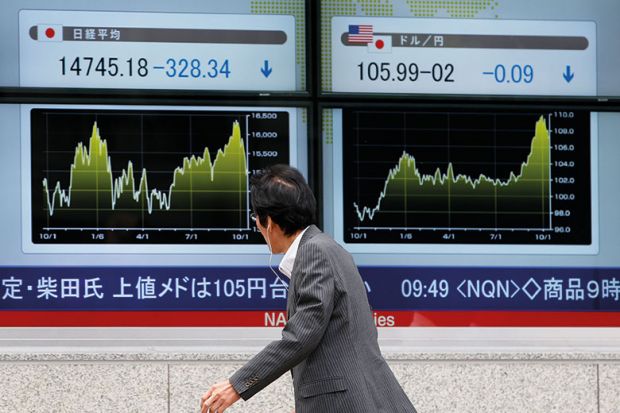Business schools across the world have recorded double-digit growth in the number of applications to and enrolments on MBA programmes, according to a report.
A study from the Association of MBAs (AMBA) found that the average number of applications per MBA programme increased by 10 per cent between 2015 and 2016, while the average enrolment per programme rose by 24 per cent in this period.
The findings, which were based on a survey of 223 AMBA-accredited business schools across the world, mark the second consecutive year of growth in applications, following a five-year decline.
Between 2014 and 2015, there was a 5 per cent growth in the number of applications for AMBA-accredited programmes, based on the schools that completed the 2016 survey.
Looking at all AMBA-accredited business schools that submitted data between 2009 and 2014, the average number of applications and enrolments per programme fell by 44 per cent and 8 per cent, respectively, it added.
The 2017 Application and Enrolment Report also found that while the gender balance was still weighted towards men, business schools have been progressing in securing more women on to MBA programmes.
The proportion of applications from women rose by four percentage points to 37 per cent between 2013 and 2016, and the share of women enrolling rose by two percentage points to 35 per cent over this time.
However, this share is much lower in some nations, with just 10 per cent of applications to business schools in India coming from women.
Will Dawes, AMBA research and insight manager and author of the study, said that business schools had previously suffered from the “period of considerable global economic uncertainty” but the recent growth reflected their “ability to innovate” and “adapt to the market”.
Many MBA programmes are now much more flexible in terms of course delivery, he said, with “modular programmes” allowing students to maintain their careers and earn a degree quickly without attending classes full-time. Business schools also have a “more global outlook”, including more study-abroad opportunities and “further development of international campuses”, he added.
The report also features an analysis focusing on a group of 90 business schools, on which AMBA has collected data each year since 2011.
This showed rises in the average number of applications in the five years to 2016 across those institutions in eastern Europe (77 per cent), Africa (48 per cent), North America (25 per cent) and western Europe (13 per cent), while there have been falls in Oceania (down 17 per cent) and the UK (16 per cent).
In terms of average enrolments, there has been growth in Africa (56 per cent), eastern Europe (56 per cent) and Oceania (15 per cent), but falls in western Europe (down 19 per cent) and the UK (8 per cent), it added.
But Mr Dawes said that it was important to note that figures on international campuses of business schools might have been attributed to the host country rather than the institution’s country of origin.
Overall, the regional breakdown “reflects the global shake-out” of the business school sector and the “prominence of Chinese, European and Latin American business schools”, he said.
后记
Print headline: MBA applications and enrolments see double-digit growth


